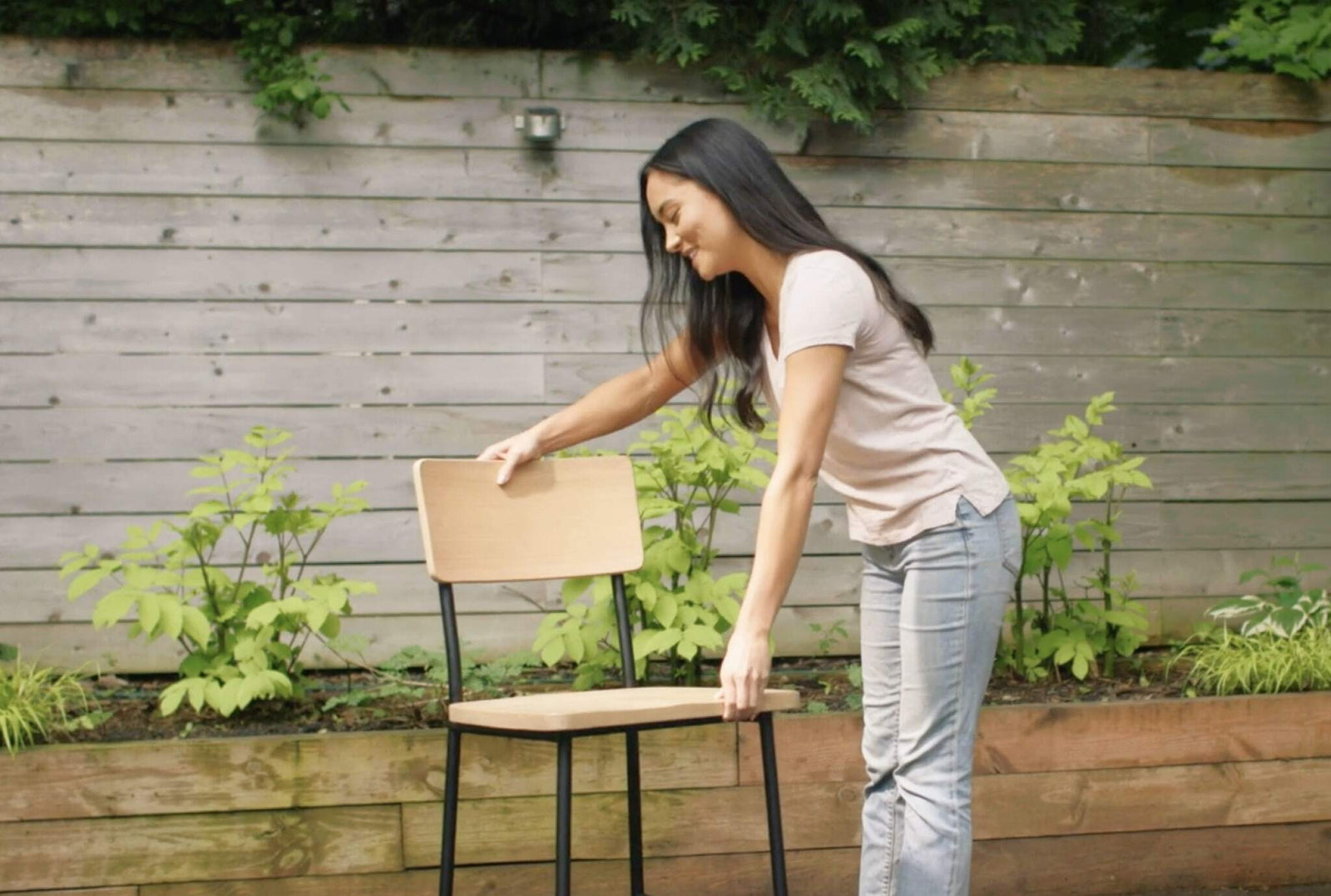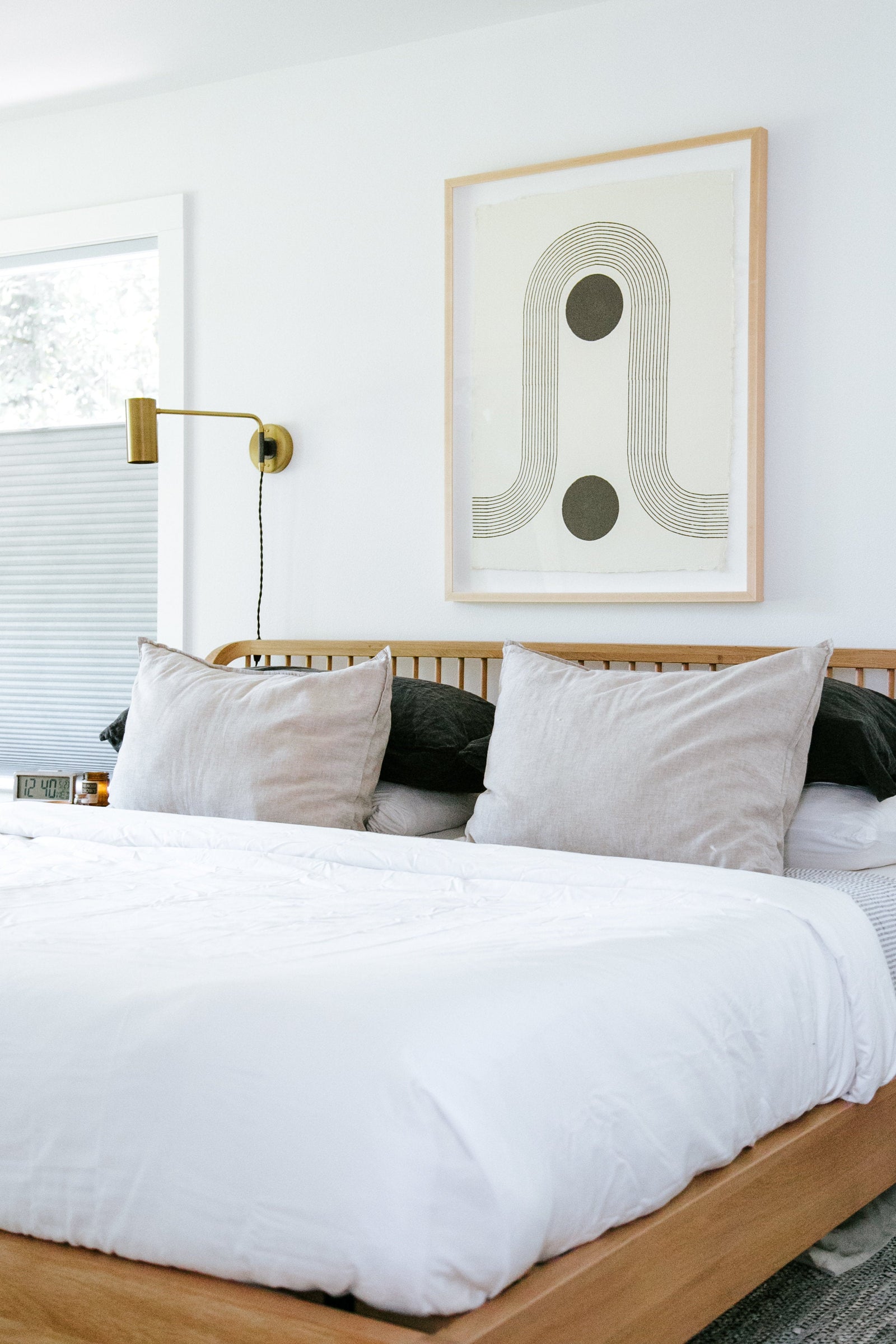How to Outgass (Offgas) & Remove VOCs Naturally: Take Advantage of the Summertime Sun

If improving indoor air quality and creating a healthier home is important to you, then you need to understand how outgassing (also known as offgassing) works in relation to the products we bring into our homes. Today, we’re breaking down everything you need to know; what outgassing means, why it can be harmful (especially to young children and babies), and simple steps you can take to prevent, mitigate and clean up outgassing byproducts in your home.
What is Outgassing (Offgassing)?
The terms, outgassing or offgassing, are interchangeable terms that relate to chemicals known as Volatile Organic Compounds (or VOCs) being released into the air. You can tell if a product contains VOCs by the smell. For example, low-VOC paint has less of an obvious odor than conventional paint. The same goes for a brand new plastic doll taken out of the package, that familiar “plastic” smell is VOCs seeping out of the doll. VOCs also exist in nature, like the scent of a flower, but those aren’t cause for concern unless you have an allergy. In other words, if the item has a smell it is outgassing VOCs.
Why Are VOCs Are Harmful
The problem with synthetic VOCs is three-fold:
#1: They can be incredibly toxic
They have been linked to sick building syndrome, asthma, endocrine-disruption, organ-damage, and cancers.
#2: They can accumulate in your home and can bioaccumulate in your body over time.
#3: They are everywhere!
Especially in plastic-containing products, building materials, scented products, pesticides and paints. If an item has a smell, it’s emitting VOCs.
Now for the good news! Once an item no longer has a smell, it is considered VOC-neutral (plastics do still release odorless SVOCs, but that’s a topic for another time). It’s not difficult to reduce your exposure to VOCs at home. The key lies in knowing how to accelerate the outgassing process and how to do it safely.
Common Sources Of Harmful VOCs in the Home
Before we get into outgassing techniques, you need to know which products typically contain the highest levels of these chemicals.
Here are 17 Common Sources of Harmful VOCs:
- Pesticides
- Alkyd/Oil based paints
- New building materials
- Fragranced products, including candles and air fresheners
- Cleaning and laundry products
- Personal care products, including children’s and baby products
- Formaldehyde-containing products (get the list here)
- Vinyl-containing products such as shower curtain liners, flooring and air mattresses
- Plastic products
- Children’s plastic toys including dolls, blocks, cars, play mats and baby toys
- Flame-retardant-containing clothing, furniture, carpets and mattresses
- Dry cleaned clothing
- Synthetic fabrics
- Electronics
- New clothing (from VOCs in the dyes, fabric treatments and fabrics)
- Used clothing (from fragranced laundry products)
- New books
How to Outgas VOCs Naturally
Your three best allies in expediting the outgassing process are
- Fresh air
- Ventilation
- Heat.
Thus, sunning your items outside on a warm sunny day can greatly expedite the removal of VOCs without polluting the air inside your home. Sunning can work on nearly any type of item listed above. The exception to this would be foam or latex, because the UV rays can break down the material. You also need to respect the sun’s natural bleaching action! Sun sensitive items can be placed outside under cover of a porch or shade which will also help to reduce VOCs. It will just take a little more time.
Take advantage of summertime as it’s the most efficient time of year for intense heat and long days. The amount of time required depends on the material. It may take as little as a couple of hours or up to several days or weeks to completely outgas VOCs.
Here are some tips to make the most of this simple process:
- Place an object in a sunny spot: The sunniest, hottest areas of the yard will volatilize the chemicals most quickly.
- Rotate, turn and allow air to circulate: Prop the object up towards the sun or lay the object on a table or basket that allows air circulation. Rotate the product as needed to get sun exposure on all sides.
- Check with a smell test: After one afternoon of sunning, smell the item to see if it still has a scent. Often just one afternoon in the sun will completely clear (outgas) all harmful VOCs. If the item still has a smell, place the item in the sun again for as many hours or days as it takes to outgas.
More tips and tricks:
- Turn clothing inside-out to avoid sun bleaching
- Note that some electronics can be sensitive to heat. If you’re unsure how they’ll react, put them in the shade to outgas (no sense wasting good money only to ruin your new laptop!)
Special Cases: Building Materials, New Homes & Renovations
Sunning is great for outgassing everyday items, but how do you sun a new home or renovated room?
You don’t. Instead, you apply the principles of fresh air, ventilation and heat to speed the removal of VOCs from formaldehyde-containing cabinets, vinyl-containing flooring or paint, for example. Better yet, get formaldehyde-free cabinets, vinyl-free flooring and no-VOC paint if you can! This can take a few weeks, but it is worth it for the sake of your health.
For a bigger project like this, you’ll probably want to bring in a home expert to test the air and set up the outgassing process. To DIY, simply heat up the house by leaving the AC off in summer or turning up the heat in winter, open the windows and use box fans to move the air around. If you can rent an air scrubber, all the better.
Alternately, if you know you’ll be installing new items that could contain VOCs, you may be able to allow them to outgas undercover outdoors until the smell goes away. This depends on the item, but it’s something to consider.
17 Tips to Prevent VOC Exposure (Safe Alternatives)
Thanks to the new demand for healthy products, it’s easier than ever to find substitutions for VOC-laden products. Let’s break down some alternatives:
- Buy no-VOC paint. Our favorite brands (that our co-founders used in their own nurseries) are: ECOS and Envirosafe. No matter what paint you use, faster curing will occur if you use a box fan in the room to increase air circulation, open windows if weather permits for air flow and turn on kitchen and exhaust fans at night to further exhaust the air.
- Work with a builder and healthy home expert to choose safer building materials.
- Use glass and stainless steel containers in place of plastic… and then sun those plastic storage bins!
- Avoid plastic toys, vinyl play mats and baby products. Instead, opt for natural wood and toys tested for safety.
- Insist on flame-retardant-free children’s/baby pajamas, carpeting, drapes and rugs. When it’s time for a new mattress (which are tricky to offgas), check out our article on how to choose the safest and healthiest mattress (they’re so much more affordable and accessible than they used to be!).
- Avoid vinyl by choosing cotton shower liners, tile or non-toxic hardwood flooring.
- Choose natural fabrics whenever possible.
- Switch to Branch Basics or another 100% natural cleaning product brand.
- Break up with fragrances!! They are truly the “new second hand smoke”.
- Check out our list of of formaldehyde-containing products to avoid.
- Opt for non-toxic, all-natural, fragrance-free personal care products. You can check out the brands we trust in: Our Favorite Non-Toxic Personal Care Products.
- Stop spraying pesticides around your home in favor of integrated pest management solutions.
- Electronics - not much we can do here but follow the outgassing procedure above.
- Avoid dry cleaning or find a non-toxic dry cleaner to avoid VOCs and other toxic residues. Outgas immediately if using a conventional dry cleaner.
- Buy used books or outgas your new ones (it doesn’t take long!).
- Choose new clothing made from natural, safer fabrics - many brands are now testing for a variety of textile toxins. If you buy synthetic fabric or a blend, outgas and consider using a Guppy Friend Washbag to prevent microplastics from entering the water supply.
- Check out our article on how to get fragrance out of used clothing.
You can also help reduce VOCs in the air by cleaning your home regularly, opening the windows daily, and using a high-quality air purifier. For those interested in taking it a step further, a high-quality water filter for drinking and showering is also helpful for reducing VOCs that come from chemicals and pollutants found in municipal water supplies.
Toss the Toxins with Branch Basics
- Outgassing refers to the release of VOCs from products and materials.
- Sunning is the easiest, cheapest and fastest way to detox VOCs from common items and household products.
- Prevention is key and must be applied to things like cleaning products, personal care products and anything that can’t be outgassed by choosing safer products.
By learning how to outgas and reduce VOCs naturally, you’ll create a healthier, cleaner home environment. Get started today with healthier home cleaning with Branch Basics starter kits.
Categories

Marilee Nelson
Marilee Nelson is an Environmental Toxins expert who has spent nearly 30 years advocating for the chemically-sensitive and chronically-ill. She is a Board Certified Nutritionist, Certified Bau-Biologist and Bau-Biology Inspector and specializes in Food As Medicine. She has helped thousands of families and individuals identify, heal and recover from toxic exposures and is on a mission to revolutionize the way American families view their health.








